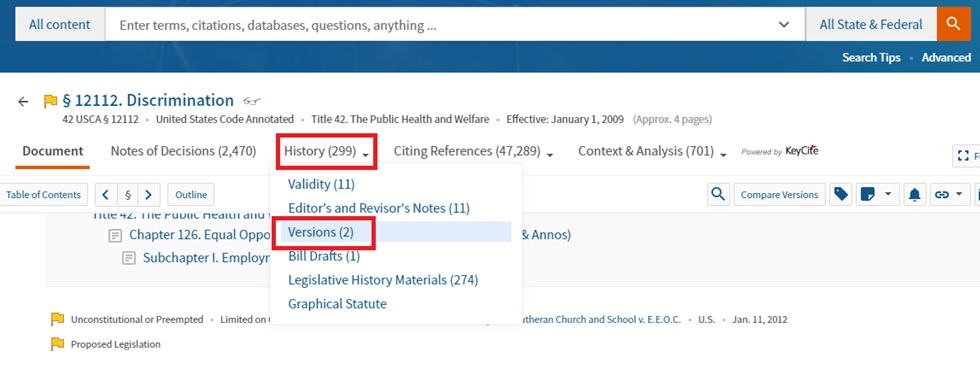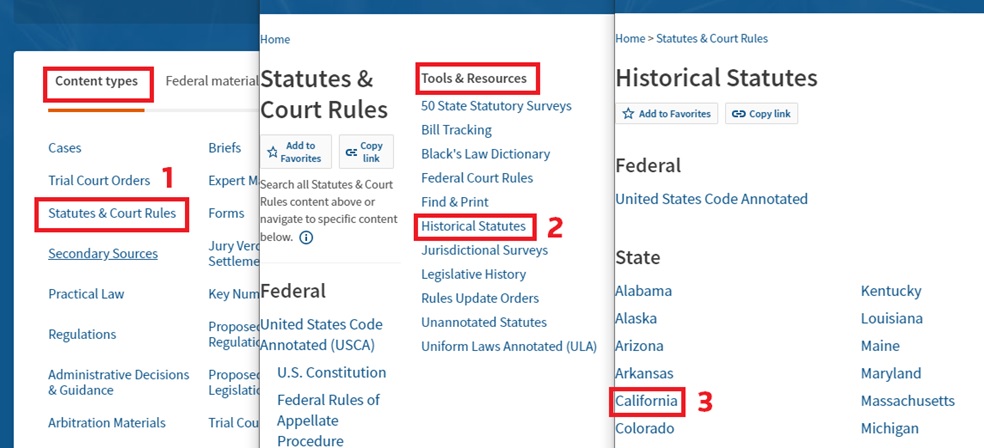You don't need to waste time wading through old law books
Legal research often requires attorneys to find out how specific laws have changed over time, particularly in situations in which lawyers need to view a version of a statute that was in effect on the date a legal matter actually arose. Likewise, the proper application and understanding of legislative intent behind a current law often requires examining older versions of that law as well as its evolution over time.
If you’ve ever tried to manually understand how a statute has changed, you know quite well how complicated it can be wading through years of session laws and numerous statutory amendments. And if the amendments aren’t obvious — or if the statute is quite large — you can spend hours painstakingly trying to figure out the history of a statute.
Fortunately, however, technology has made this slow, arduous process a thing of the past. In fact, attorneys can now use Statutes Compare in Westlaw Edge to instantly compare different versions of a statute, highlighting how it has changed over time.
How do I use Statutes Compare?
It’s extremely easy to use Statutes Compare. Once you are viewing a statute in Westlaw Edge, simply click on the “Compare Versions” button on the right-hand side.
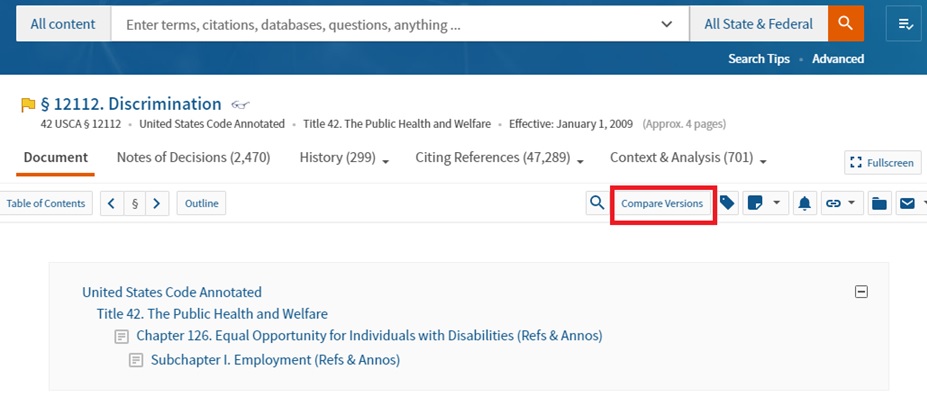
This will create a single document in which the historical changes — both additions and deletions — for a specific statute are called out. This means you can quickly see how statute has changed over time without having to look through all of the old statutory versions and manually comparing them.
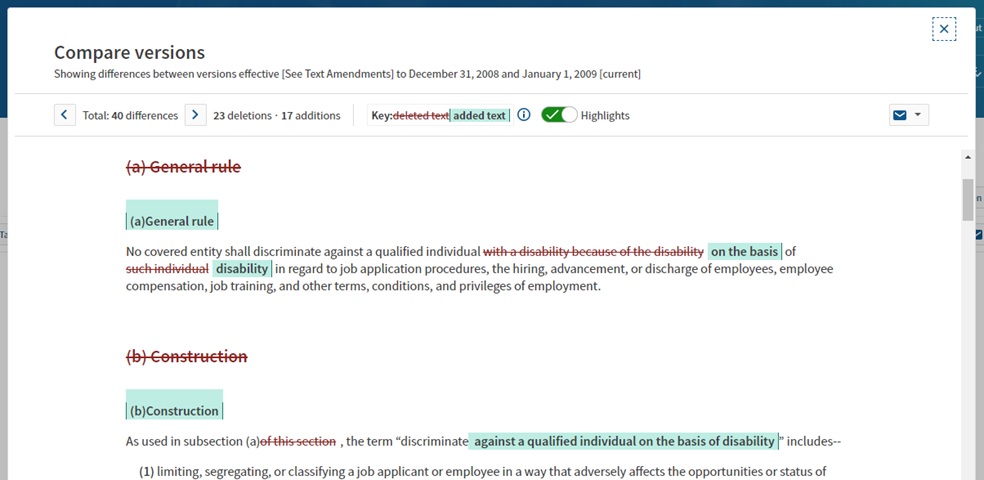
You can still get historical versions of statutes on Westlaw Edge, too
While using Statutes Compare is by far the easiest way to see how a statute has changed over time, it is important to note that historical versions of statutes are still available for many jurisdictions on Westlaw Edge. Historical versions are essentially snapshots of particular statutes during a specific time period.
The easiest way to access a historical version of a statute is to first go to the current version, and then select “Versions” from the “History” tab. This will pull up a list of the versions available on Westlaw Edge.
When prior versions are available, they are arranged by effective date in reverse chronological order. Just click on the version you are interested in to see how that statute appeared on a specific date.
More ways to access historical statutes on Westlaw Edge
Another way you can access historical statutes is to browse to the content. When you browse, note that there are several different ways to get to the same content. For example, if you want to access prior statutes for a particular state (e.g., California), there are three different routes to get there from the main Westlaw Edge page:
- 1) Click “Statutes & Court Rules” on the “Content Types” tab, 2) click “Historical Statutes” in the right column under “Tools & Resources,” and then 3) click the name of the desired jurisdiction (California).
- 1) Click “Statutes & Court Rules” on the “Content Types” tab, 2) scroll down and click the name of the desired jurisdiction (California), and then 3) click “California Statutes Annotated – Historical” link in the right column under “Tools & Resources.”
- 1) Click a state name on the “State materials” tab (California), 2) scroll down and click “California Statutes & Court Rules” on the state’s page, and then 3) click the “Statutes Annotated – Historical” link in the right column under “Tools & Resources.”
All three of these options will bring you to the “Statutes Annotated – Historical” page. Once there, you will see links to the individual years that are available. Simply click on the statutory year you would like to search and an Advanced Search template will display. Use the template to search with specific information (e.g., citation) or use the search box at the top of the page to search the full text.
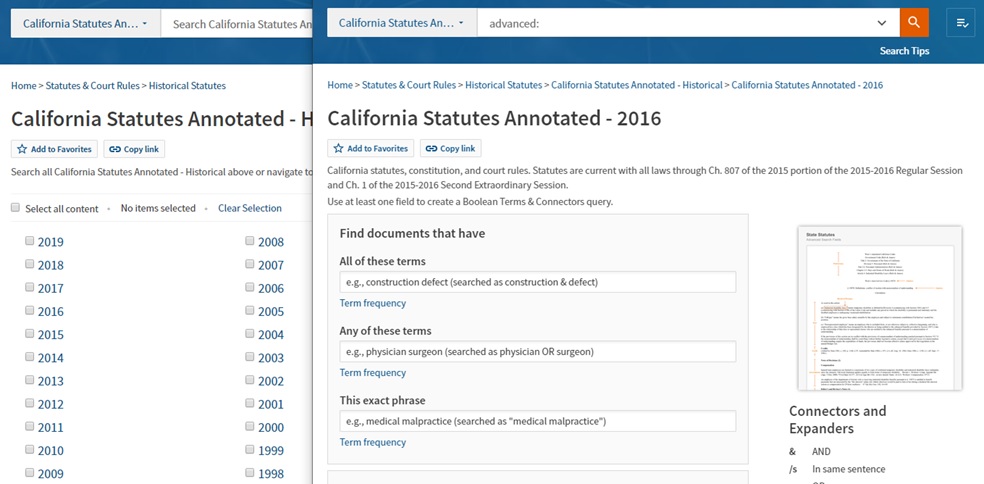
Auto-suggest and historical statutes
Yet another way you can access historical statutes is to begin by typing the name of the content in the search box. An auto-suggest box will drop down and display the available publications that match your input. Here is one example of how to retrieve historical statutes using auto-suggest:
- Begin by typing the word “historical” followed by the jurisdiction of the statutes you desire. Then click on “Statutes Annotated – Historical” from the suggestion drop-down, which will take you to the “Statutes Annotated – Historical” page mentioned above.

As you can see, there are many ways on Westlaw Edge in which you can see how specific statutes have evolved over the years. If you’re not a Westlaw subscriber, now is a great time to start your free 7-day trial. With so many ways to access historical statutes, as well as the ease of using Statutes Compare, you’ll be able to research effectively and efficiently, enhancing your strategy and authority.

